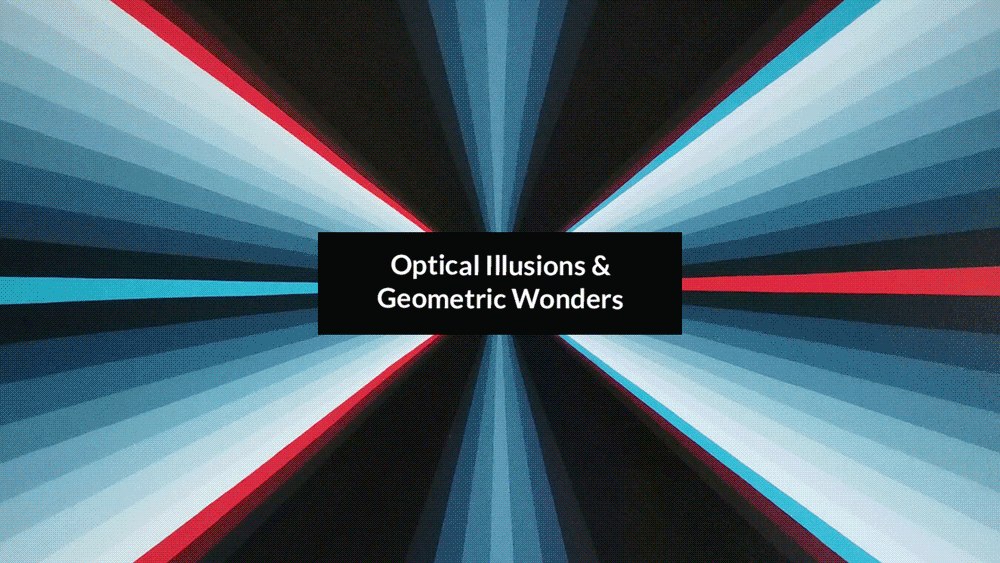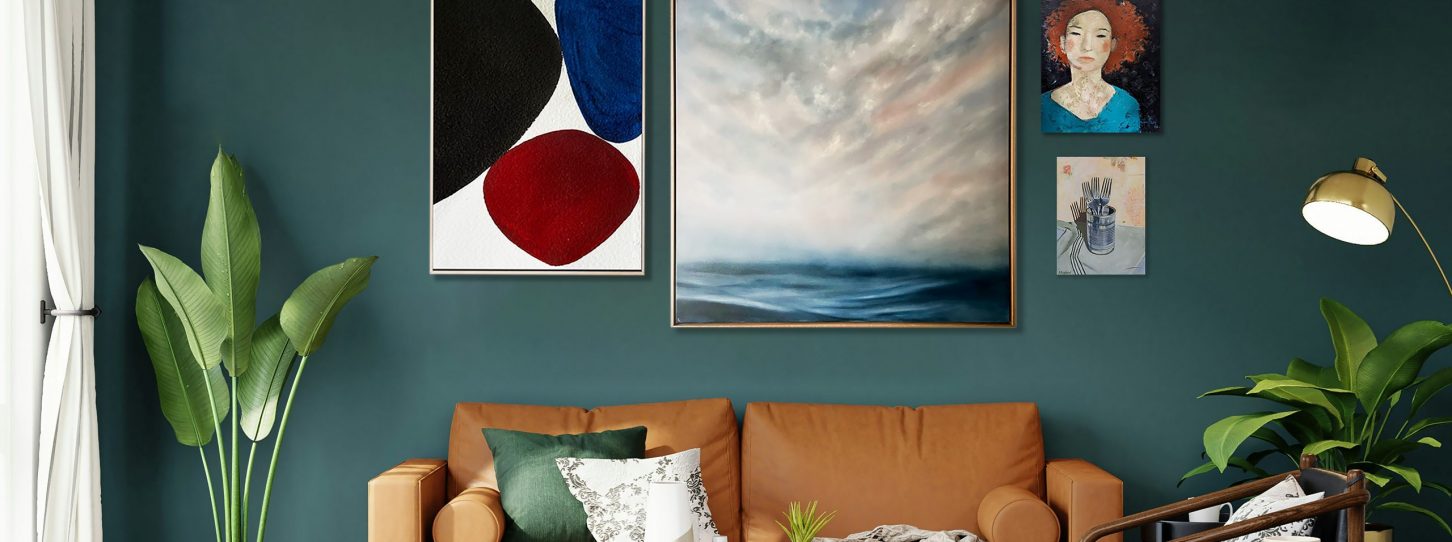Optical Illusions and Geometry: Playing with Perception in Art
Optical illusions have fascinated and captivated audiences for centuries. In this blog post, we delve into the world of optical illusions, exploring how artists employ the principles of geometry to create mesmerising works of art that dazzle our senses and challenge our perception of reality.
Geometric Patterns: The Foundation of Illusion
One of the key elements in creating optical illusions is the use of geometric patterns. These meticulously designed shapes and arrangements are strategically placed to manipulate the viewer’s perception, often giving the impression of movement, depth, or even three-dimensionality on a flat surface.

The Opener by Aileen Ng. Click the image to shop for original art online.
Perspective and Illusion
Moreover, geometry plays a crucial role in manipulating perspective, a fundamental aspect of creating convincing illusions. Artists utilise techniques like foreshortening, vanishing points, and linear perspective to create the illusion of depth and dimensionality on a flat canvas. By employing these geometric principles, artists can trick the eye into perceiving three-dimensional space, drawing the viewer deeper into the artwork.
Imagine it like a visual magic trick. Artists use lines, angles, and shapes to create a mind-bending effect that makes you question what you see. They make lines meet and part ways, creating the illusion of things coming toward you or going away. Do you see how the lines, angles, and shapes in the artwork below create a sense of dimension?
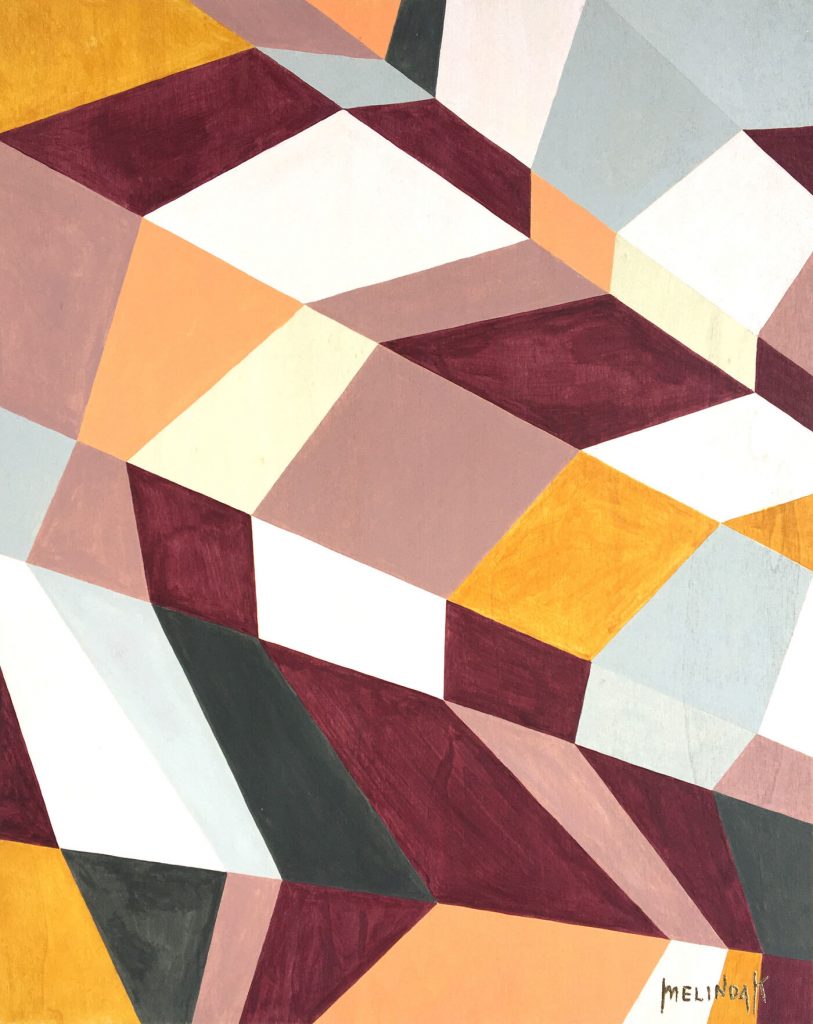
FACETED – Geotricity Series by Melinda Katotriatis. Click the image to shop for original art online.
Precision in Colour Selection
In addition, artists wield colour like wizards to conjure mind-bending optical illusions. They expertly play with contrasts, using complementary colours to make objects pop or recede. Warm hues step forward, while cool shades create distance. Gradients and blending create smooth transitions, giving the illusion of movement and depth. Checkerboard patterns create bulging or sinking effects on a flat surface. Simultaneous contrast tricks our eyes, making colours appear to shift against different backgrounds. Shadows and highlights come into play, making things look like they’re popping out of the page.
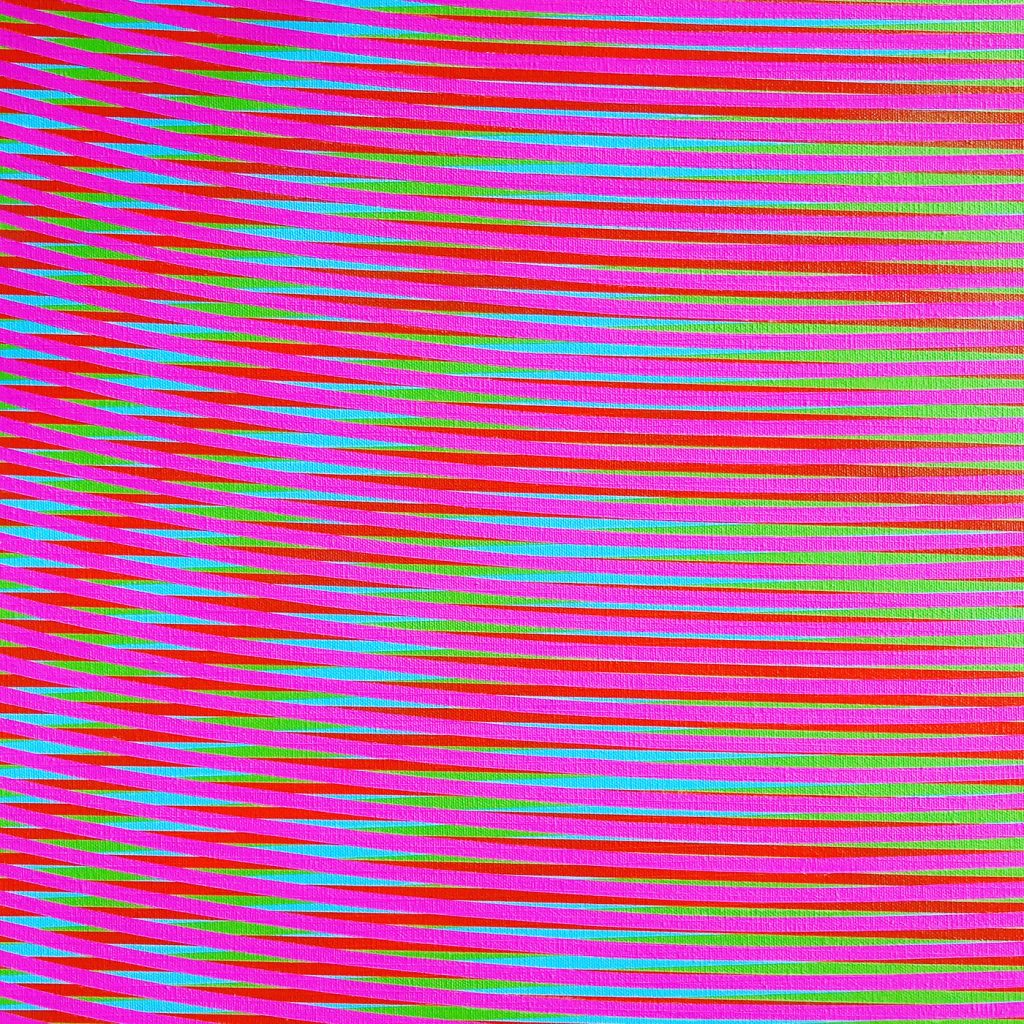
Blue Orbs by Brad Holland. Click the image to shop for original art online or
Escher’s World of Impossible Realities
The Dutch artist M.C. Escher is perhaps one of the most celebrated masters of optical illusion. His intricate and mind-bending works often feature impossible architectural structures and endless tessellations, blurring the lines between reality and illusion. Escher’s art is a testament to the power of geometry in creating illusions that challenge our understanding of spatial relationships.
Escher’s distinctive style often featured staircases that appeared to defy the laws of physics. By employing this motif, he delved into themes of perception, space, and mathematical principles. Today, the impact of Escher’s work can be found in the creations of contemporary artists.
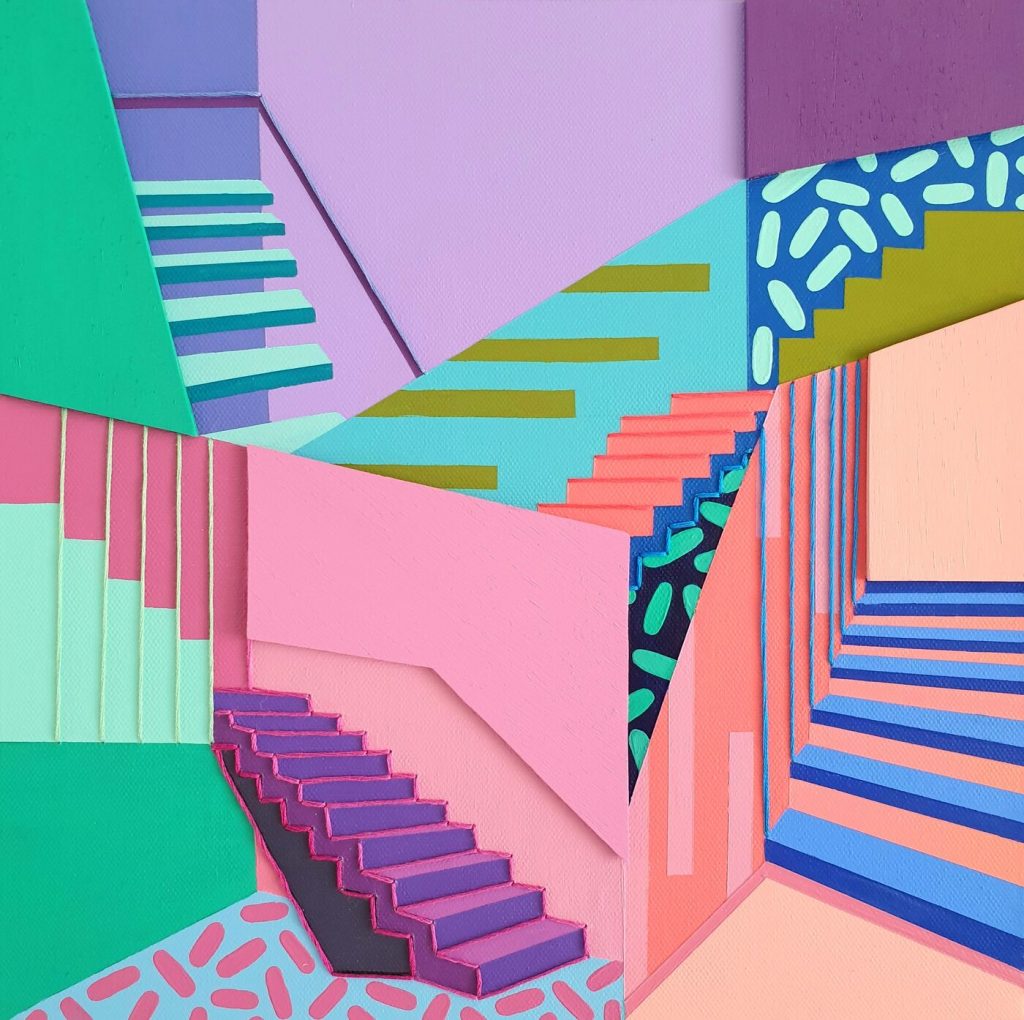
There’s So Much Down There by Valentina Albert. Click the image to shop for original art online.
Discover and shop optical illusions by Australian Artists in this week’s curation, Optical Illusions & Geometric Wonders. Step into a world where seeing is deceiving, and explore visual marvels today!


